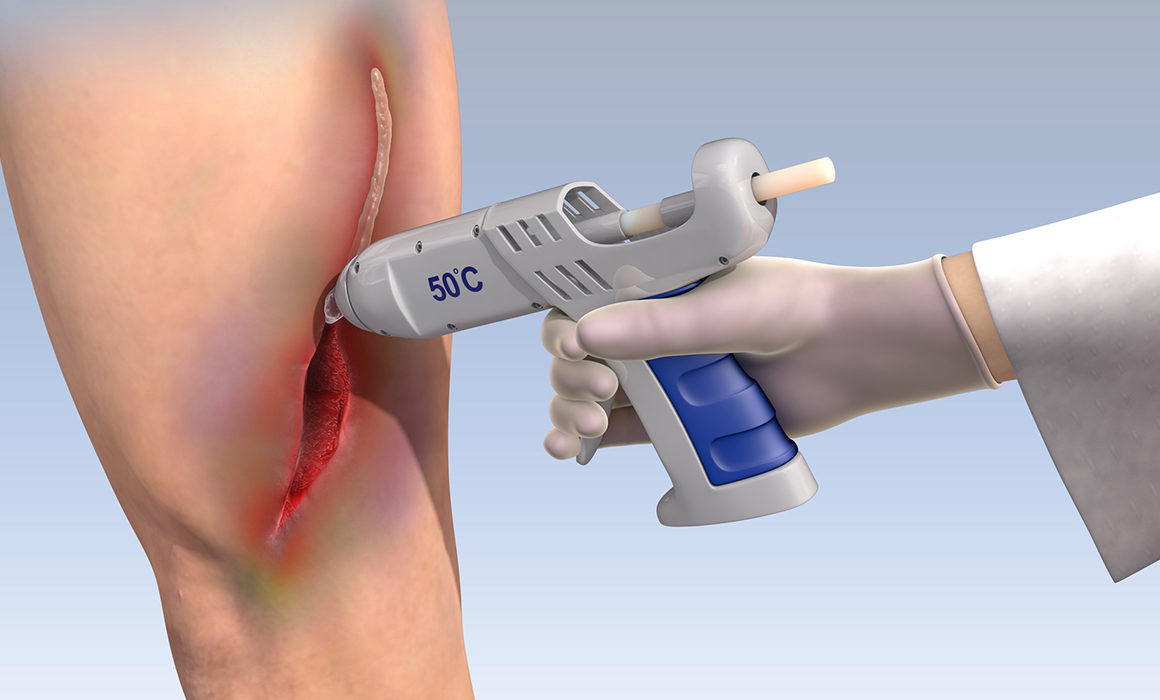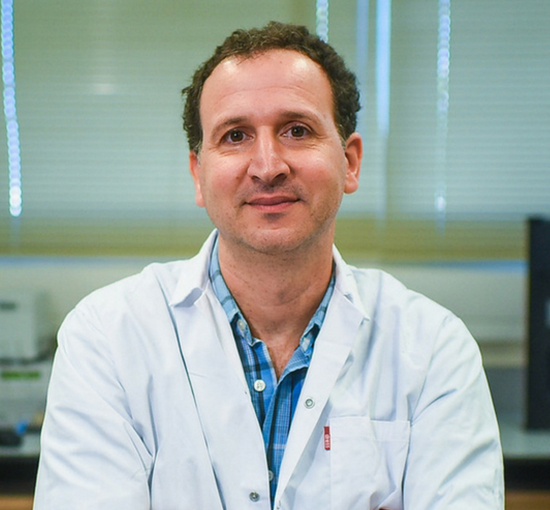Chances are, you have a hot glue gun somewhere in your home. They’re perfect for scrapbooking, arts and crafts, assembling toys, even the occasional repair around the house.
And now, researchers at the Technion–Israel Institute of Technology have adapted hot-glue-gun technology to heal seriously injured human tissues.
Better, Faster Healing
Most serious injuries are treated with sutures, pins, and staples that can leave painful scars and sometimes require removal after the tissues heal. It also requires a great deal of medical skill to suture or staple skin, which drives up medical costs.
Medical glue is different. Already popular in the field, particularly in dermatology and surgical theaters, it can produce improved medical and cosmetic results.
Medical glue does come with drawbacks: Because it is very toxic, it can be utilized only on the surface of the skin. The glue must be hard enough to fuse the skin together — but that can make the organ less flexible. These challenges have prevented more widespread use of medical glue in wound care.
A New Way
In an article published recently in Advanced Functional Materials, Biomaterials Laboratory head Professor Boaz Mizrahi and doctoral student Alona Shagan introduced a strong, nontoxic tissue adhesive that remains flexible even after solidifying.
The adhesive is based on a biocompatible, low-melting-point, four‐armed N‐hydroxy succinimide‐modified polycaprolactone, named star‐PCL‐NHS. Star-PCL-NHS is melted and applied to the skin using a device similar to a hot glue gun.
Unlike a hot glue gun you can use for crafting, this device heats the glue to a moderate temperature — just a bit warmer than human body temperature. After the glue is applied, it quickly hardens, though changes in molecular weight allow physicians to control the strength, melting point, and elasticity properties of the glue. It decomposes in a few weeks.
The nontoxic adhesive can also be used to fuse tissues inside the body, unlike other medical glue on the market. It is four times stronger than current adhesives used for this purpose.
The straightforward yet highly effective and durable glue and its simple delivery method are game-changers in wound management. The researchers hope this new concept will reduce the use of stitches, staples, and pins, speeding up the healing process and reducing scarring in patients.

